Abstract
The definition of the respiratory input in experimental human exposure to volatile solvents was examined on theoretical grounds. The respiratory rate of input may be defined as the rate of uptake that equals the inhaled minus exhaled amount per minute. In the present paper the rate of respiratory input is defined as the rate of the functional intake (RFI) which equals the product of the inhaled concentration (CI) and a functional alveolar ventilation (Va). The functional Va is a virtual alveolar volume per minute which equilibrates completely with the mixed venous blood. Human subjects were exposed simultaneously to tetrachloroethene (PER, perchloroethylene) and trichloroethene (TRI) in order to study the consequences of the application of both definitions. It is shown that when using the uptake as the respiratory input some misleading conclusions may be drawn on (a) the dependence of the metabolised fraction on the duration of exposure, (b) the dependence of the kinetic characteristic on the duration and route of administration, and (c) the changes of the rate of metabolism during exposure due to physical exercise. The respiratory input defined as the rate of functional intake (RFI) rejects these misleading conclusions.
Full text
PDF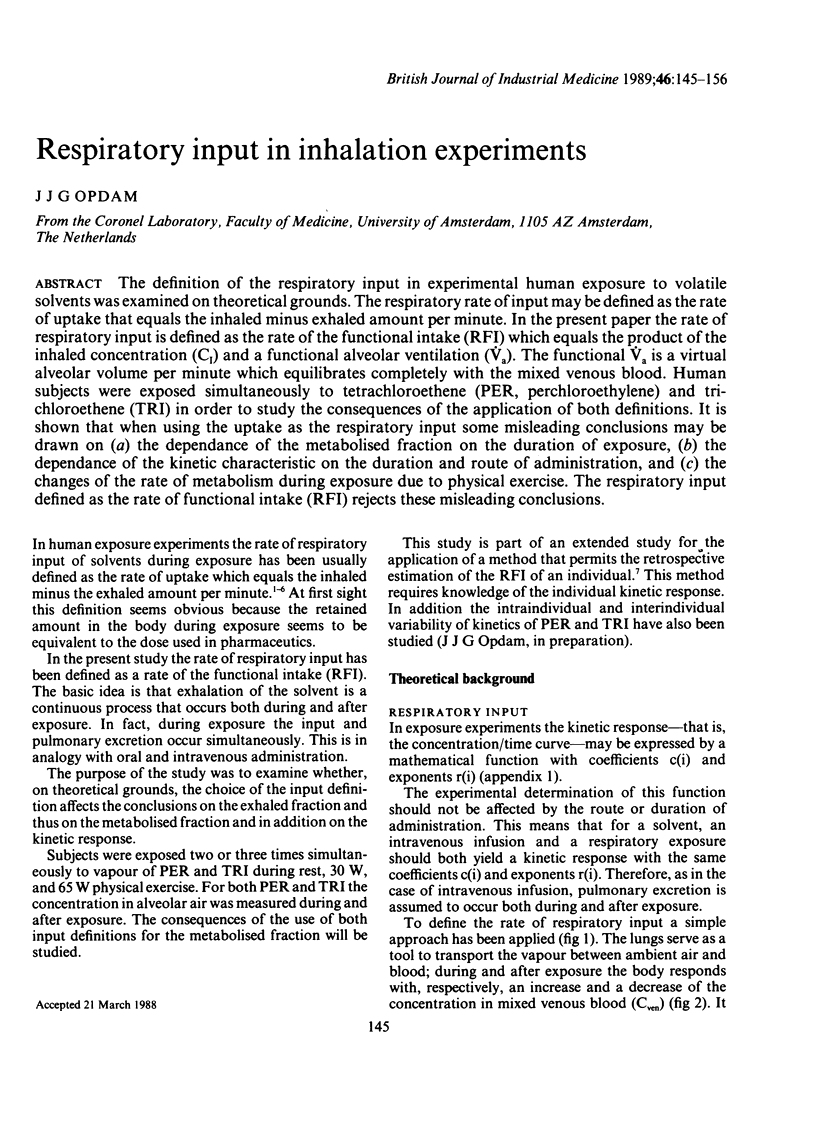
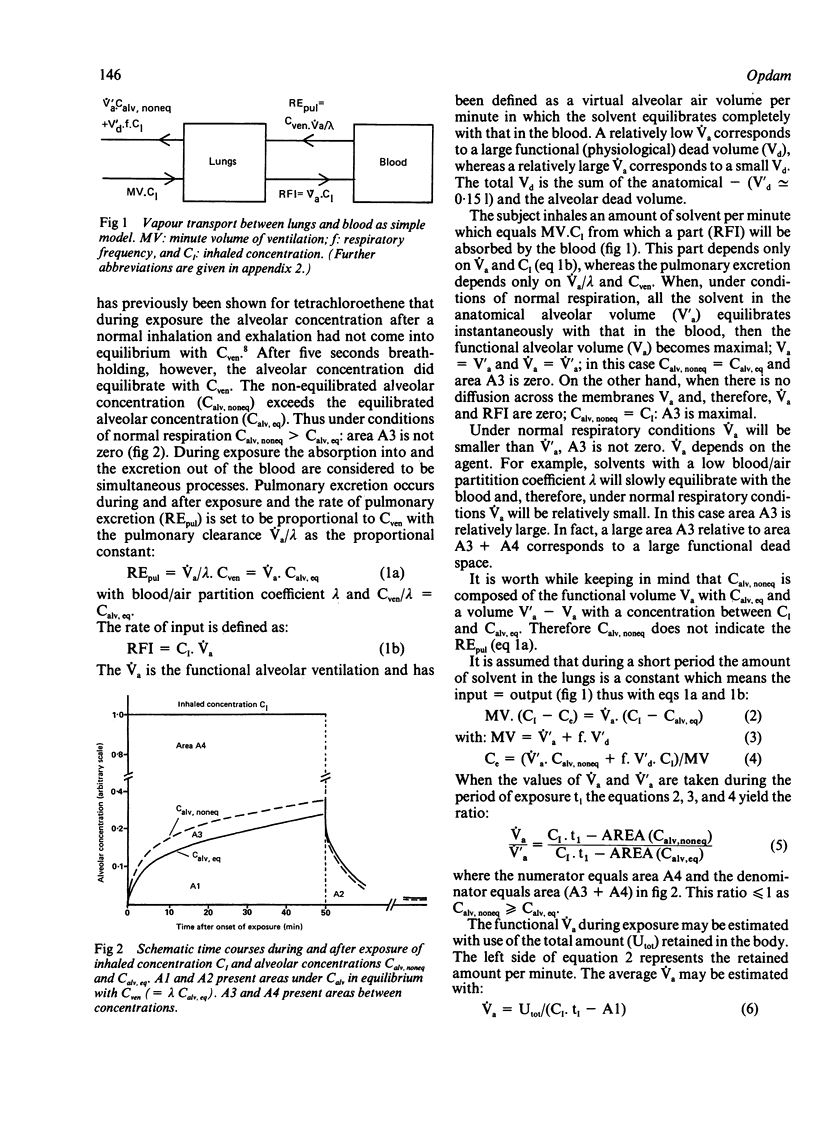

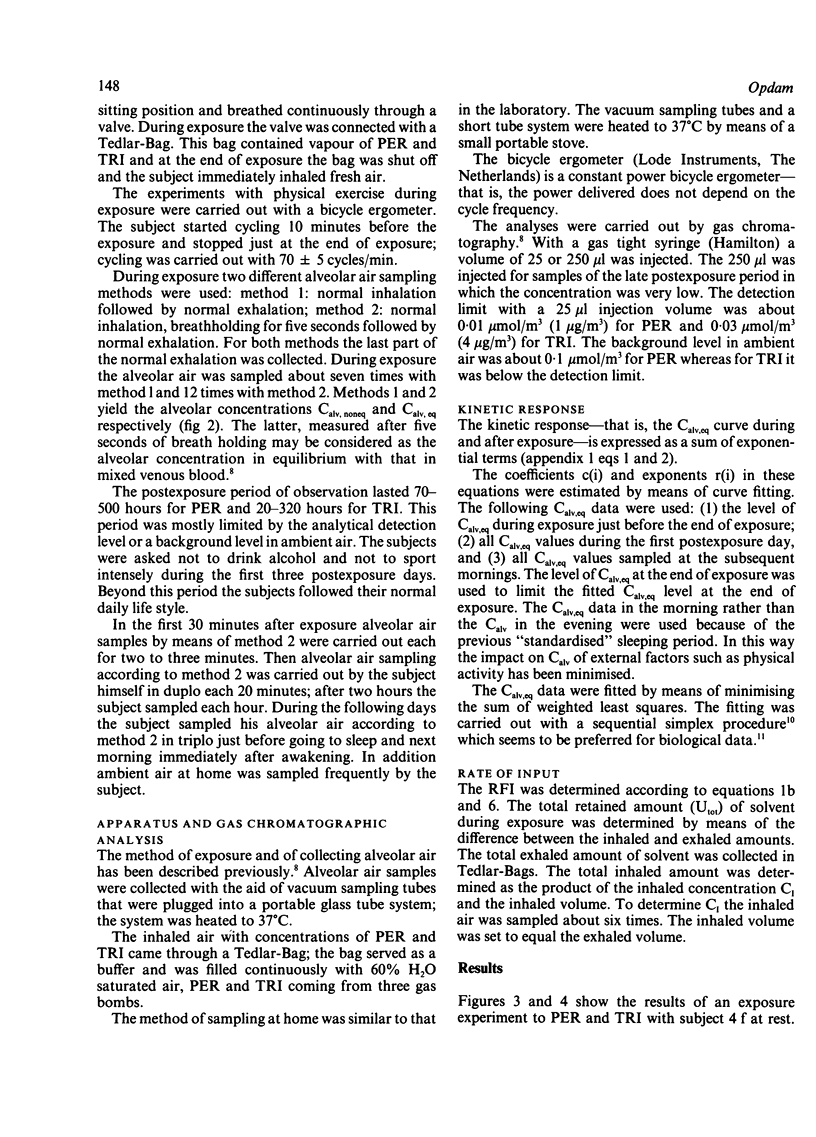
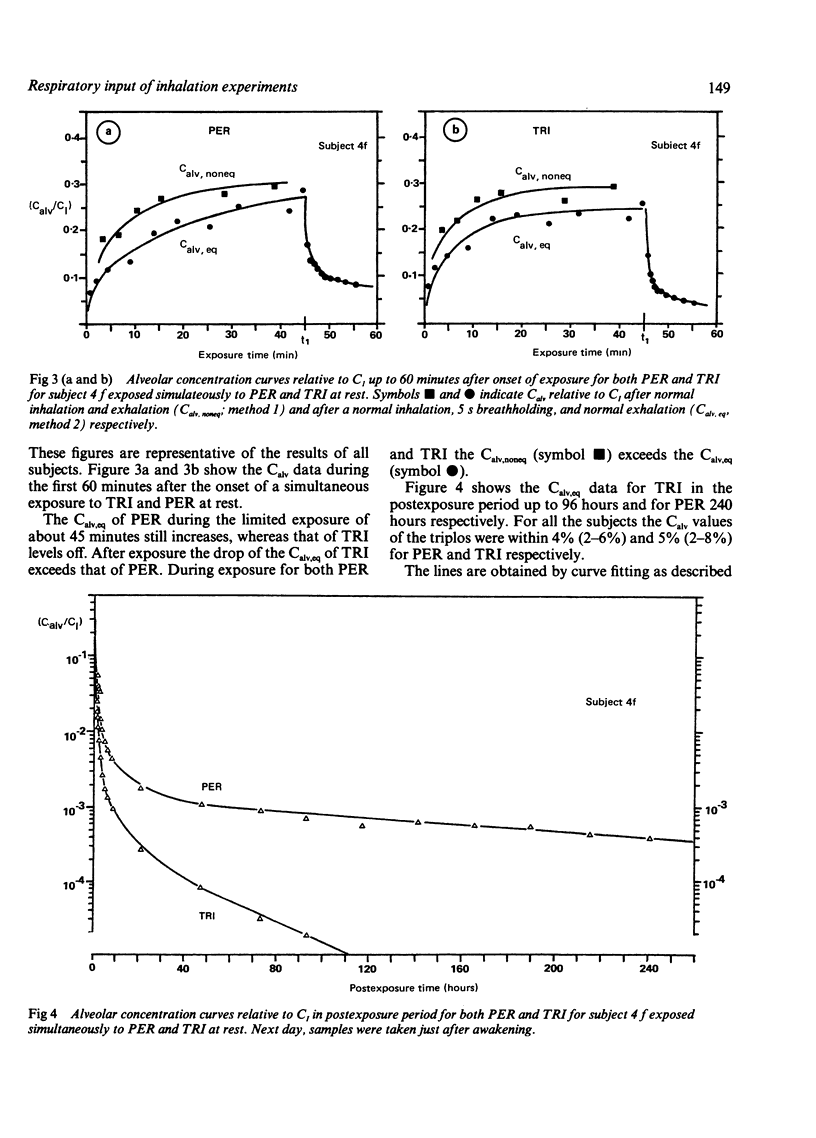

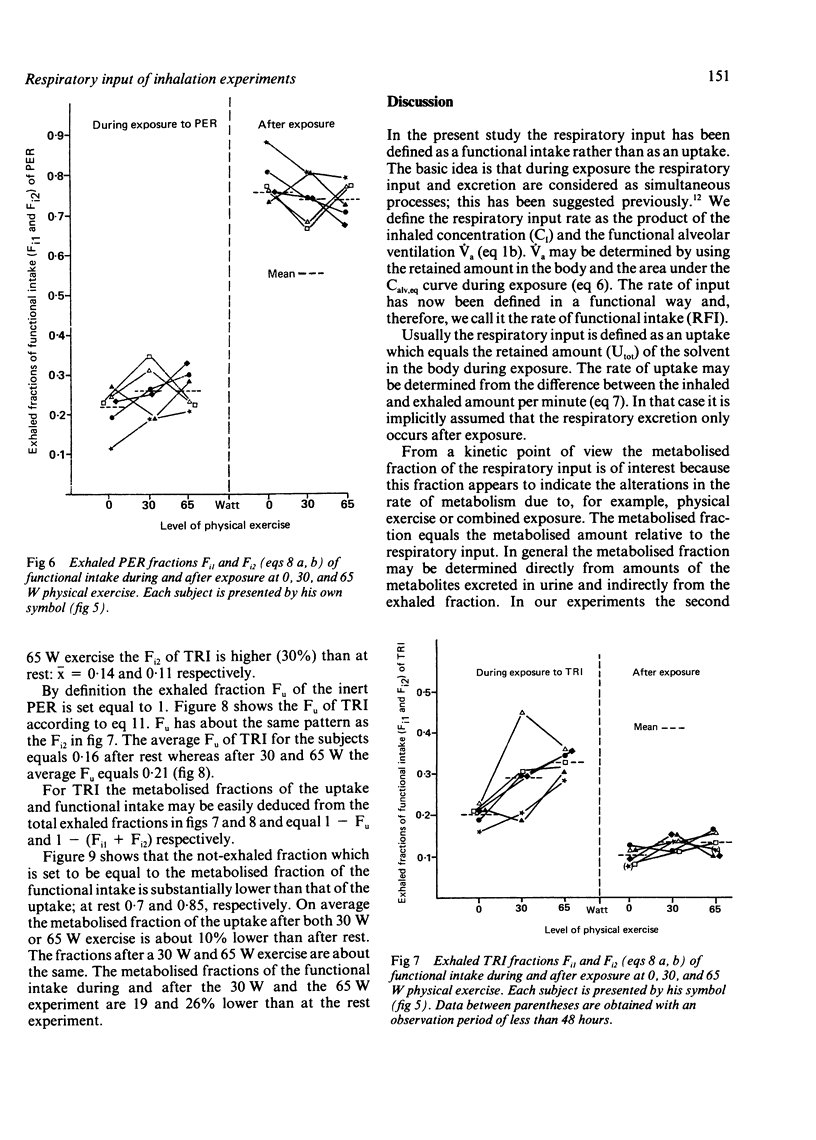
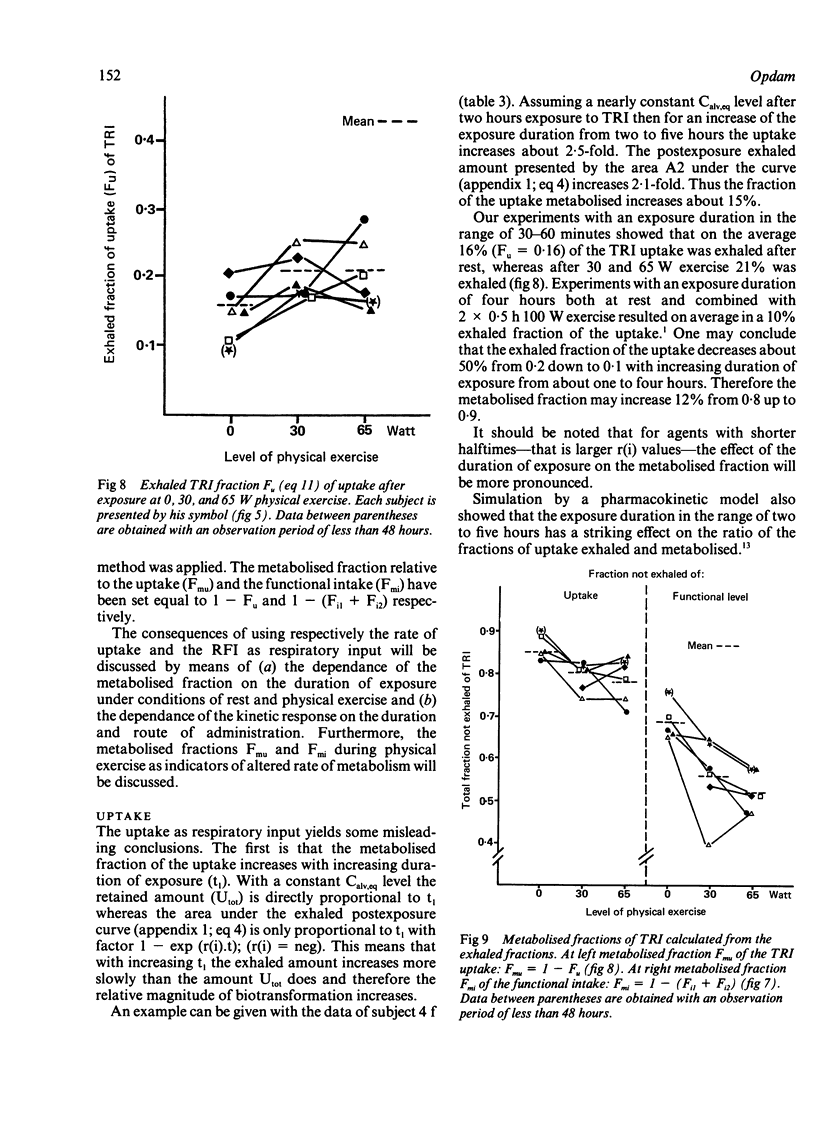
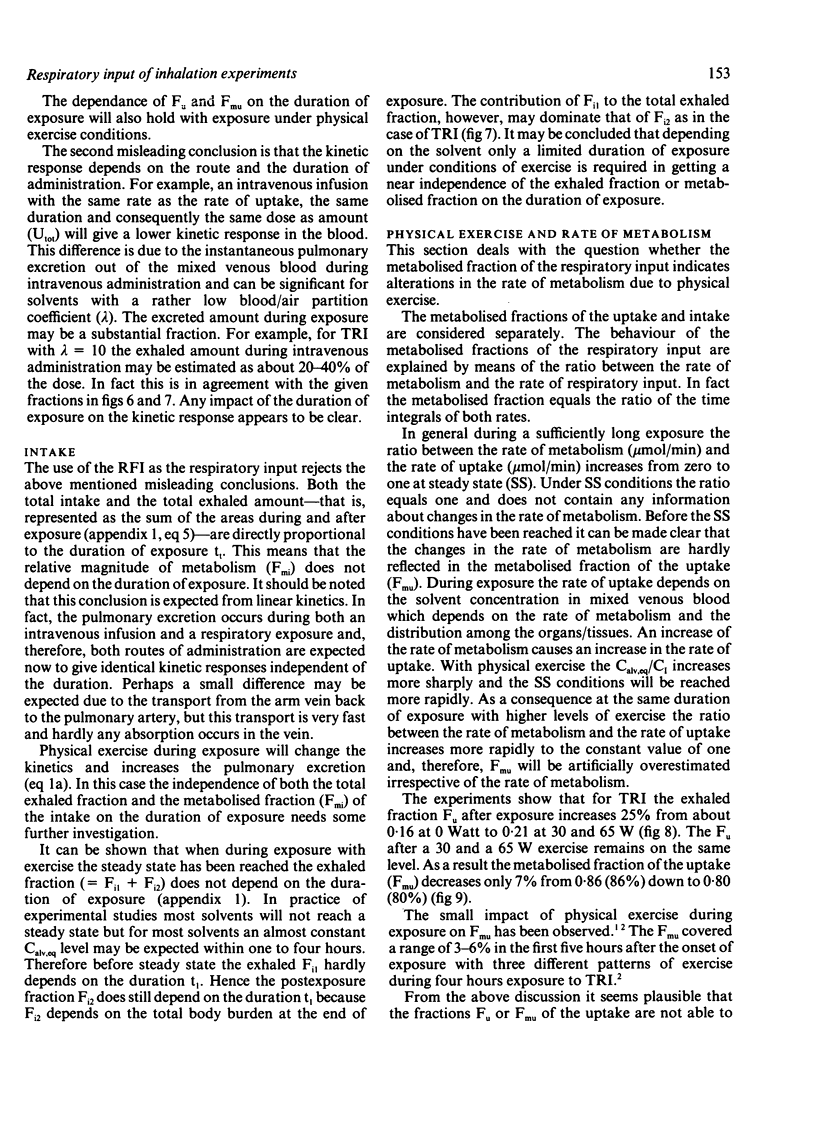
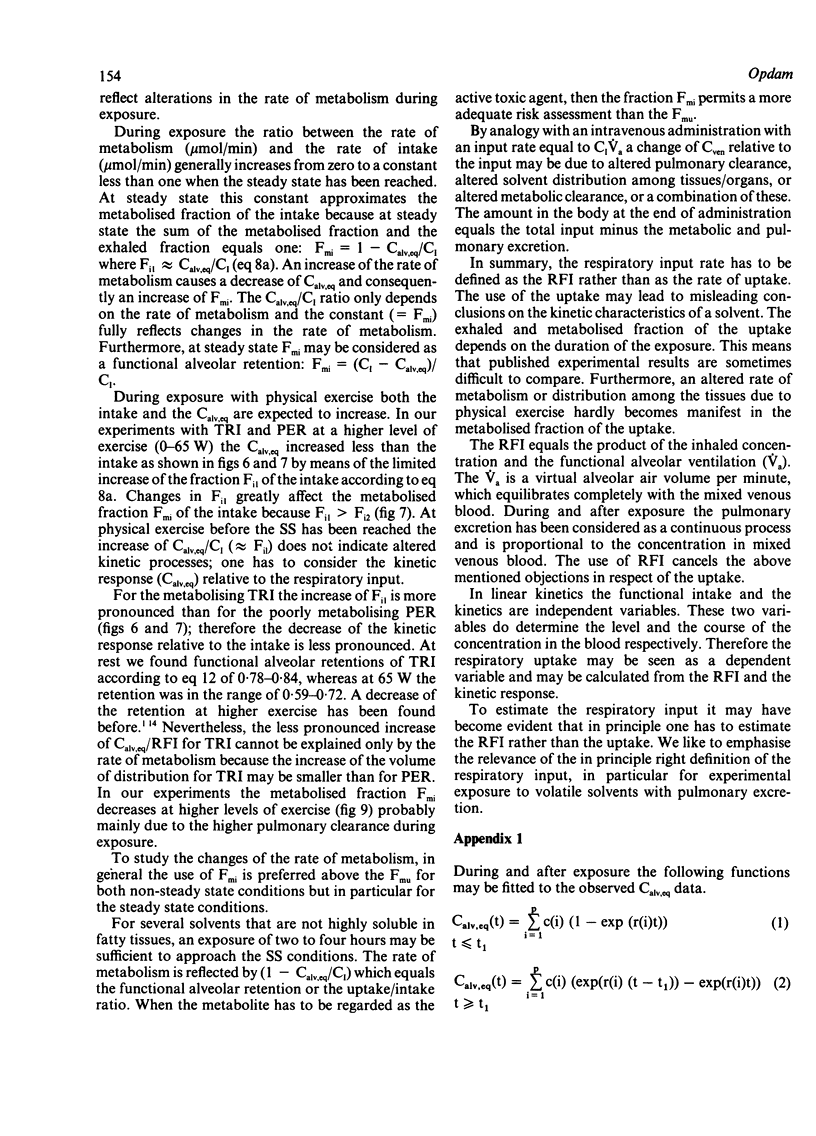


Selected References
These references are in PubMed. This may not be the complete list of references from this article.
- Astrand I., Ovrum P. Exposure to trichloroethylene I. Uptake and distribution in man. Scand J Work Environ Health. 1976 Dec;2(4):199–211. [PubMed] [Google Scholar]
- Carlsson A. Exposure to toluene: uptake, distribution and elimination in man. Scand J Work Environ Health. 1982 Mar;8(1):43–55. doi: 10.5271/sjweh.2497. [DOI] [PubMed] [Google Scholar]
- Fiserova-Bergerova V., Vlach J., Cassady J. C. Predictable "individual differences" in uptake and excretion of gases and lipid soluble vapours simulation study. Br J Ind Med. 1980 Feb;37(1):42–49. doi: 10.1136/oem.37.1.42. [DOI] [PMC free article] [PubMed] [Google Scholar]
- Groeseneken D., Veulemans H., Masschelein R. Respiratory uptake and elimination of ethylene glycol monoethyl ether after experimental human exposure. Br J Ind Med. 1986 Aug;43(8):544–549. doi: 10.1136/oem.43.8.544. [DOI] [PMC free article] [PubMed] [Google Scholar]
- Monster A. C., Boersma G., Duba W. C. Pharmacokinetics of trichloroethylene in volunteers, influence of workload and exposure concentration. Int Arch Occup Environ Health. 1976 Dec 15;38(2):87–102. doi: 10.1007/BF00378619. [DOI] [PubMed] [Google Scholar]
- Nomiyama K., Nomiyama H. Respiratory retention, uptake and excretion of organic solvents in man. Int Arch Arbeitsmed. 1974;32(1):75–83. doi: 10.1007/BF00539097. [DOI] [PubMed] [Google Scholar]
- Opdam J. J., Smolders J. F. Alveolar sampling and fast kinetics of tetrachloroethene in man. I. Alveolar sampling. Br J Ind Med. 1986 Dec;43(12):814–824. doi: 10.1136/oem.43.12.814. [DOI] [PMC free article] [PubMed] [Google Scholar]
- Pedersen P. V. Curve fitting and modeling in pharmacokinetics and some practical experiences with NONLIN and a new program FUNFIT. J Pharmacokinet Biopharm. 1977 Oct;5(5):513–531. doi: 10.1007/BF01061732. [DOI] [PubMed] [Google Scholar]
- Vesterberg O., Gorczak J., Krasts M. Exposure to trichloroethylene II. Metabolites in blood and urine. Scand J Work Environ Health. 1976 Dec;2(4):212–219. doi: 10.5271/sjweh.2802. [DOI] [PubMed] [Google Scholar]
- Veulemans H., Masschelein R. Experimental human exposure to toluene, III. Urinary hippuric acid excretion as a measure of individual solvent uptake. Int Arch Occup Environ Health. 1979 Mar 7;43(1):53–62. doi: 10.1007/BF00454280. [DOI] [PubMed] [Google Scholar]
- Wallén M., Näslund P. H., Nordqvist M. B. The effects of ethanol on the kinetics of toluene in man. Toxicol Appl Pharmacol. 1984 Dec;76(3):414–419. doi: 10.1016/0041-008x(84)90345-4. [DOI] [PubMed] [Google Scholar]


